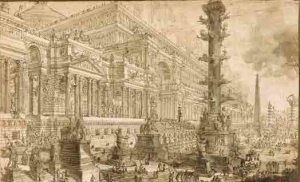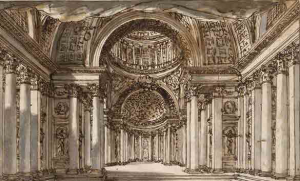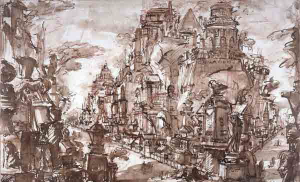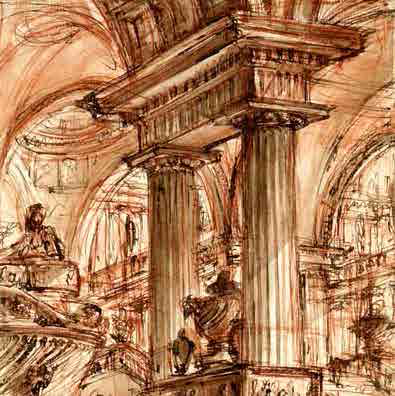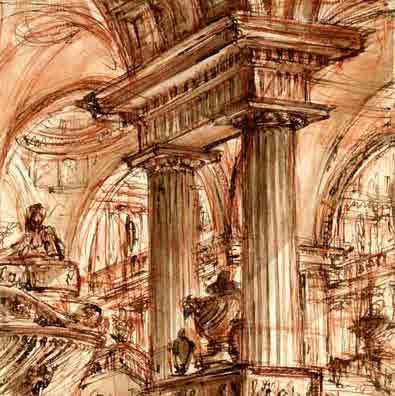Architecture and Design News
By Norman Weinstein
12th March 2020 12:45 GMT
Art News
Designboom
Divisare
Inhabitat
Juxtapoz
Places Journal
The Art Newspaper
Uncube
Zinio
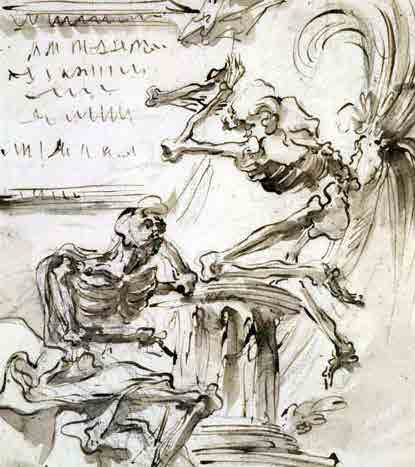
Imran Peretta © Lenka Rayn H

Each month Kecho Collective issues a montly journal discussing relevant issues in architecture and design. The typical format contains sections of onging design exhibition or event, architect, typology, city architecture, and a recent project from our studio. The sections in Kecho journal is similar to this website’s pages. For architects, we discuss important figures in the past as well as the contemporary ones. For typology, we will run through the “standard” typolgoies we find today in the field (hospitality, residential, urbanism, landscape etc) but with a keen eye on the “sub-types” or the alternatives. City architecture will focus mostly on Hanoi for this moment, where remnants of the past and most recent important buildings would be showcased. The Cafe Kecho section includes exhibition/ event, interview (of designer or user), news (summarizing design magazines), and a calendar that links to other events in the city.
His drawings are just as singular in the history of architectural art as the etchings, albeit lesser known. And this year, the 300th anniversary of Piranesi’s birth, is marked by two shows of the drawings: “Sublime Ideas: Drawings by Giovanni Battista Piranesi,” opening in May at The Morgan Library in New York City, and The British Museum. Thames & Hudson has just published an outstanding exhibition catalogue for the British Museum show, Piranesi Drawings: Visions of Antiquity. Authored by curator Sarah Vowles, the text is concise, lucid, and well complemented by excellent reproductions of 50 drawings. When the drawings relate to Piranesi’s etchings, the etchings are reproduced en face. This book works as an inspiring guide for anyone not only interested in Piranesi’s eccentric genius, but also pondering unconventional interpretations of architectural classicism.
What follows is less a book review – you already have my book recommendation – than a meditation of why Piranesi’s art matters more than ever in reinterpreting classicism.
- A monumental staircase in a vaulted interior with columns, c. 1750-55
- Painting
Timeline

Design News Today | Archive
Steven Holl’s Museum of Fine Arts, Houston
The MFAH’s program includes 240,000 sf structure that hosts permanent collection of modern and contemporary art. The building is a synthesis of Holl’s revisited program and the trapezoidal site of the Museum District. Porisity and light continue to be the central theme for Steven Holl in this building, emphasized by the use of translucent glass tubes for cladding. The assembly could reduce cooling requirements by 40 percents, according to Kendall/ Heaton Associates. While the exterior pays tribute to Mies, the interior natural lighting is inspired by Louis Kahn’s Kimbell Art Museum, but “more organic, more dynamic – like the clouds.” Architectural Records
House
The MFAH’s program includes 240,000 sf structure that hosts permanent collection of modern and contemporary art. The building is a synthesis of Holl’s revisited program and the trapezoidal site of the Museum District. Porisity and light continue to be the central theme for Steven Holl in this building, emphasized by the use of translucent glass tubes for cladding. The assembly could reduce cooling requirements by 40 percents, according to Kendall/ Heaton Associates. While the exterior pays tribute to Mies, the interior natural lighting is inspired by Louis Kahn’s Kimbell Art Museum, but “more organic, more dynamic – like the clouds.” Architectural Records
Park and Garden
The MFAH’s program includes 240,000 sf structure that hosts permanent collection of modern and contemporary art. The building is a synthesis of Holl’s revisited program and the trapezoidal site of the Museum District. Porisity and light continue to be the central theme for Steven Holl in this building, emphasized by the use of translucent glass tubes for cladding. The assembly could reduce cooling requirements by 40 percents, according to Kendall/ Heaton Associates. While the exterior pays tribute to Mies, the interior natural lighting is inspired by Louis Kahn’s Kimbell Art Museum, but “more organic, more dynamic – like the clouds.” Architectural Records
Sustainability
The MFAH’s program includes 240,000 sf structure that hosts permanent collection of modern and contemporary art. The building is a synthesis of Holl’s revisited program and the trapezoidal site of the Museum District. Porisity and light continue to be the central theme for Steven Holl in this building, emphasized by the use of translucent glass tubes for cladding. The assembly could reduce cooling requirements by 40 percents, according to Kendall/ Heaton Associates. While the exterior pays tribute to Mies, the interior natural lighting is inspired by Louis Kahn’s Kimbell Art Museum, but “more organic, more dynamic – like the clouds.” Architectural Records
Architecture and Environment
The MFAH’s program includes 240,000 sf structure that hosts permanent collection of modern and contemporary art. The building is a synthesis of Holl’s revisited program and the trapezoidal site of the Museum District. Porisity and light continue to be the central theme for Steven Holl in this building, emphasized by the use of translucent glass tubes for cladding. The assembly could reduce cooling requirements by 40 percents, according to Kendall/ Heaton Associates. While the exterior pays tribute to Mies, the interior natural lighting is inspired by Louis Kahn’s Kimbell Art Museum, but “more organic, more dynamic – like the clouds.” Architectural Records
Ad hoc Architecture
The MFAH’s program includes 240,000 sf structure that hosts permanent collection of modern and contemporary art. The building is a synthesis of Holl’s revisited program and the trapezoidal site of the Museum District. Porisity and light continue to be the central theme for Steven Holl in this building, emphasized by the use of translucent glass tubes for cladding. The assembly could reduce cooling requirements by 40 percents, according to Kendall/ Heaton Associates. While the exterior pays tribute to Mies, the interior natural lighting is inspired by Louis Kahn’s Kimbell Art Museum, but “more organic, more dynamic – like the clouds.” Architectural Records
—
Design Magazines
AA School
The AA Archive holds a large collection of recordings of lectures,conferences, symposia and other public programme events presented at the AA. Dating back to 1968, the collection includes titles by leading architects, artists, historians, and theorists of the last 50 years including Cedric Price, Reyner Banham, Kenneth Frampton, Peter Cook, Rem Koolhaas and Zaha Hadid.
Arch News Now featuring news from other magazines, including latest debates on the profession, projects and competitions. It also has its own op/ed section.
Architectural Record features Houses, Building Types, Interviews, Book Reviews and Podcasts.
Art News: on architects to “draw the line on designing jails [and such] until America repairs racial injustice,” and “shift their efforts towards ‘supporting the creation of new systems, processes, and typologies'” (it’s not a ban on designing justice facilities).
Designboom: on architects to “draw the line on designing jails [and such] until America repairs racial injustice,” and “shift their efforts towards ‘supporting the creation of new systems, processes, and typologies'” (it’s not a ban on designing justice facilities).
DETAIL: Topics include Sustainability, Researches on Components & Material, Energy & Resources, as well Structure.
Dezeen: on architects to “draw the line on designing jails [and such] until America repairs racial injustice,” and “shift their efforts towards ‘supporting the creation of new systems, processes, and typologies'” (it’s not a ban on designing justice facilities).
Divisare: on architects to “draw the line on designing jails [and such] until America repairs racial injustice,” and “shift their efforts towards ‘supporting the creation of new systems, processes, and typologies'” (it’s not a ban on designing justice facilities).
Domus: on architects to “draw the line on designing jails [and such] until America repairs racial injustice,” and “shift their efforts towards ‘supporting the creation of new systems, processes, and typologies'” (it’s not a ban on designing justice facilities).
Dwell: Photo section dwells on rooms and components: kitchen, bath, bedroom. living, dining, outdoor, kids, office, exterior, storage, doors, windows, staircase, laundry, hallway, garage, shed & studio. The Home Tours section includes Tiny Home, Prefab and Renovations projects.
FORM: on architects to “draw the line on designing jails [and such] until America repairs racial injustice,” and “shift their efforts towards ‘supporting the creation of new systems, processes, and typologies'” (it’s not a ban on designing justice facilities).
Frame: focuses on interior design across typologies: Retail, Hospitality, Work, Institutions, Residences and Shows.
Havard Design Magazine: on architects to “draw the line on designing jails [and such] until America repairs racial injustice,” and “shift their efforts towards ‘supporting the creation of new systems, processes, and typologies'” (it’s not a ban on designing justice facilities).
Inhabitat: on architects to “draw the line on designing jails [and such] until America repairs racial injustice,” and “shift their efforts towards ‘supporting the creation of new systems, processes, and typologies'” (it’s not a ban on designing justice facilities).
Juxtapoz: on architects to “draw the line on designing jails [and such] until America repairs racial injustice,” and “shift their efforts towards ‘supporting the creation of new systems, processes, and typologies'” (it’s not a ban on designing justice facilities).
l’Architecture d’Aujourd’hui: on architects to “draw the line on designing jails [and such] until America repairs racial injustice,” and “shift their efforts towards ‘supporting the creation of new systems, processes, and typologies'” (it’s not a ban on designing justice facilities).
Metropolis: on architects to “draw the line on designing jails [and such] until America repairs racial injustice,” and “shift their efforts towards ‘supporting the creation of new systems, processes, and typologies'” (it’s not a ban on designing justice facilities).
Places Journal: on architects to “draw the line on designing jails [and such] until America repairs racial injustice,” and “shift their efforts towards ‘supporting the creation of new systems, processes, and typologies'” (it’s not a ban on designing justice facilities).
Tạp chí Kiến Trúc: on architects to “draw the line on designing jails [and such] until America repairs racial injustice,” and “shift their efforts towards ‘supporting the creation of new systems, processes, and typologies'” (it’s not a ban on designing justice facilities).
The Architects Newspaper: on architects to “draw the line on designing jails [and such] until America repairs racial injustice,” and “shift their efforts towards ‘supporting the creation of new systems, processes, and typologies'” (it’s not a ban on designing justice facilities).
The Art Newspaper: on architects to “draw the line on designing jails [and such] until America repairs racial injustice,” and “shift their efforts towards ‘supporting the creation of new systems, processes, and typologies'” (it’s not a ban on designing justice facilities).
The Guardian: on architects to “draw the line on designing jails [and such] until America repairs racial injustice,” and “shift their efforts towards ‘supporting the creation of new systems, processes, and typologies'” (it’s not a ban on designing justice facilities).
Uncube: on architects to “draw the line on designing jails [and such] until America repairs racial injustice,” and “shift their efforts towards ‘supporting the creation of new systems, processes, and typologies'” (it’s not a ban on designing justice facilities).
Zinio: on architects to “draw the line on designing jails [and such] until America repairs racial injustice,” and “shift their efforts towards ‘supporting the creation of new systems, processes, and typologies'” (it’s not a ban on designing justice facilities).

